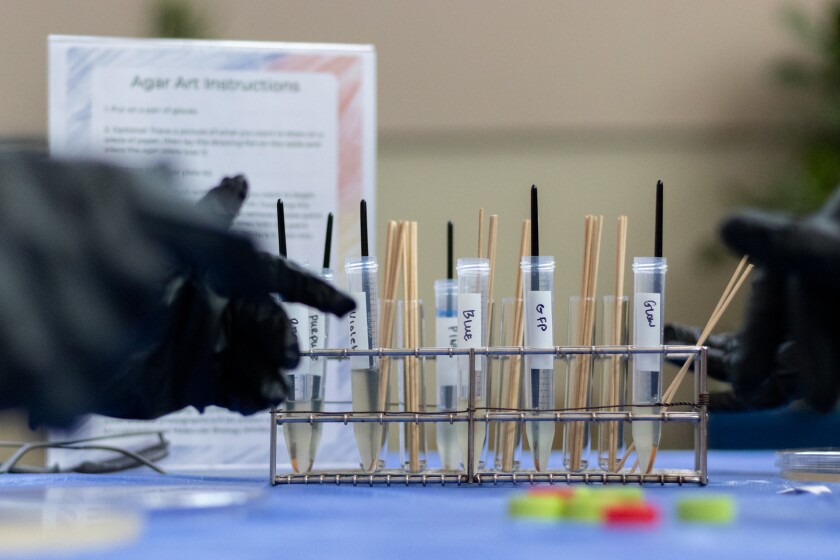
The Department of Microbiology and Molecular Biology combined science and art through its unique, semi-annual Agar Art Competition last week.
The Agar Art Competition happens once during the fall semester and again during the winter semester. Designed to bring science to the BYU community in an accessible way, the competition allows everyone to try their hand at both art and science.
Robert Black, the current MMBIO lab administrator, said they started hosting the competition after Dr. Mark Martin from the University of Puget Sound visited campus in 2017.
During his visit, Martin shared how agar was being used at Puget Sound and provided BYU labs with various types of bacteria. Martin also showed students how to work with agar on a larger scale, which then spurred the first agar art event at BYU six years ago.


When Black saw how well received the first agar art competition was, he knew he had found something good and decided to repeat the event.
“Ever since then, we’ve decided to carry out the tradition and just do it twice a year,” Black said.
Agar, Black explained, is a translucent bacterial food source that comes from algae. The six 'paint' tubes students used to create their designs contained harmless strains of genetically altered E. coli with different colorful pigments in addition to one that even glowed in the dark.
When participants take a paint brush from a particular tube, they are actually putting the bacteria that produces that color in the agar plate with each brush stroke. Once in the agar, the bacteria eats the agar and starts multiplying. As the bacteria starts growing, it begins producing its pigments.
“So, they’re just making colonies of bacteria that are different colors,” Black said.
The theme for this semester's BYU Agar Art Competition followed the theme of the American Society for Biology's agar art competition: 'Microbiology in Space.' According to Black, the microbiology association holds a continent-wide agar competition every year.
The competition theme serves as a guideline for the participants' designs. Black plans to submit the winning designs from BYU to compete with designs from other universities from Canada to South America.
Sydney Wride, a BYU senior studying art and winner of the fall 2021 agar contest, thinks agar art resembles conventional art mediums more than some might think. With agar, just like in her art classes, she does not know what the end result is going to be.
“There's something here for everybody because nobody knows how it's gonna turn out. So it really doesn't matter, it's just having fun together because none of us can see what we're doing,” Wride said.
Wride explained the contest has also been a sort of catalyst for a lot of science questions she would not have previously considered because she is not a science student.

Another participant, Alayna Een, is an English graduate. Een enjoys participating in these events that she did not get to attend during her time as an undergrad at BYU.
“There are hundreds of different experiences you can have at BYU and I'm just trying to sample a few more,' Een said.
Een considers events like the agar art competition to be some of the unique, enriching opportunities that make BYU an experience and not just simply an education.
As she followed the directions and tried this new form of art, Een gained respect for the science students who know more about the processes behind the art.

Rachel David Prince, a PhD student from India, is an artist at heart. Although she has a science background, one of her passions is drawing.
Prince had worked with agar in the MMBIO lab but had never used a paintbrush on it. For the agar art competition, she left her white coat in the lab and only brought her artistic self.
“Here I'm not a scientist ... I'm not a researcher. I'm not a PhD student ... It makes me feel one, one among everyone,” Prince said.
According to Black, there is no rubric when judging the winners. Judges look at the aesthetics of the pictures but also take effort into consideration.
At the end of the competition, the agar plates are taken back to the MMBIO lab to allow the bacteria to grow. According to Black, they store the plates in incubators for a day or two and then the colors start coming out and pictures appear.
The next agar art competition will be in March of 2024.















